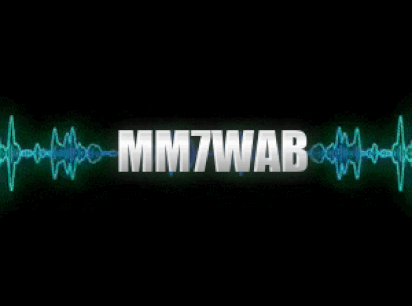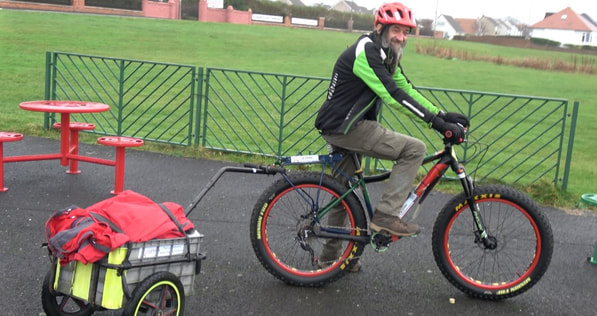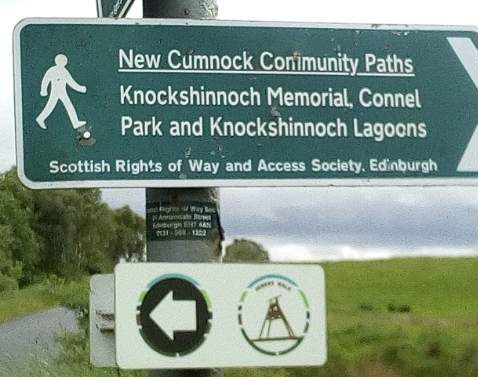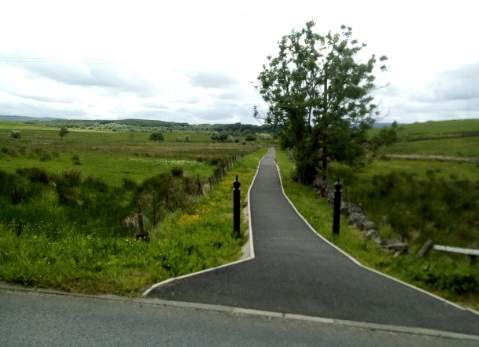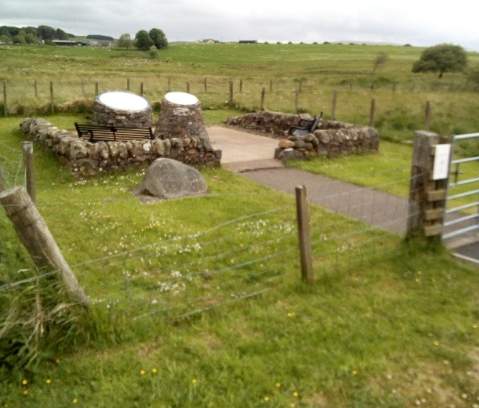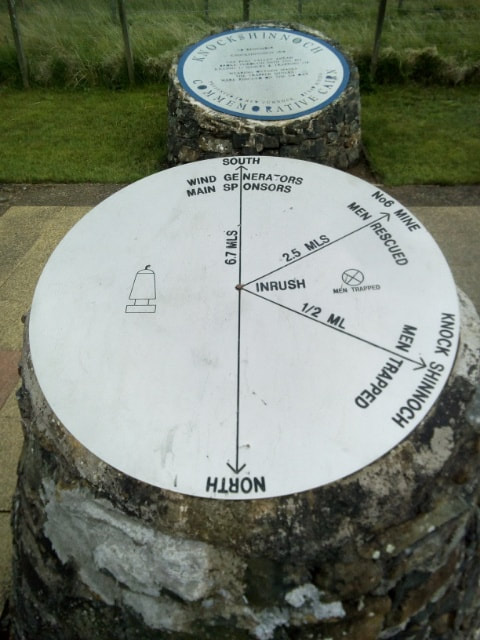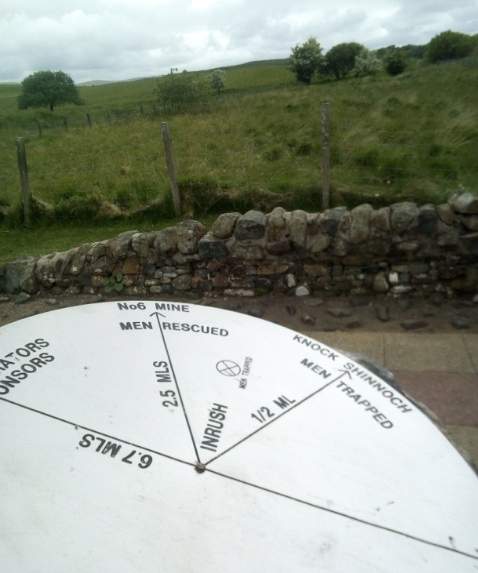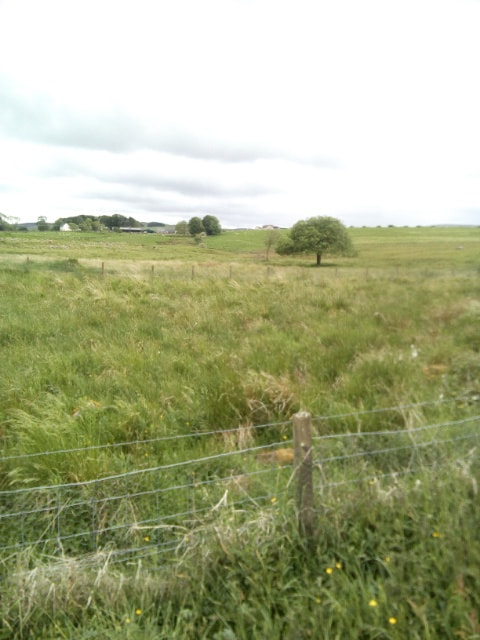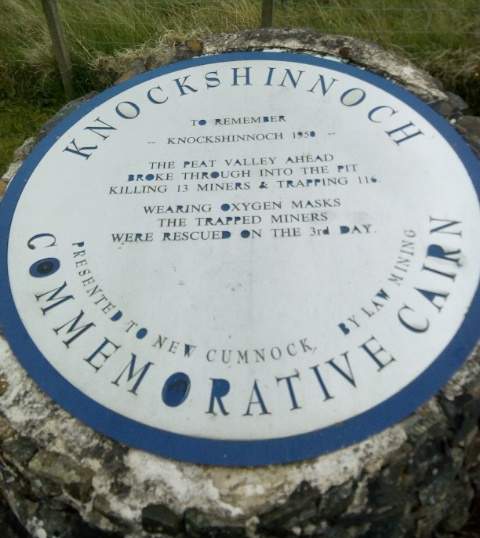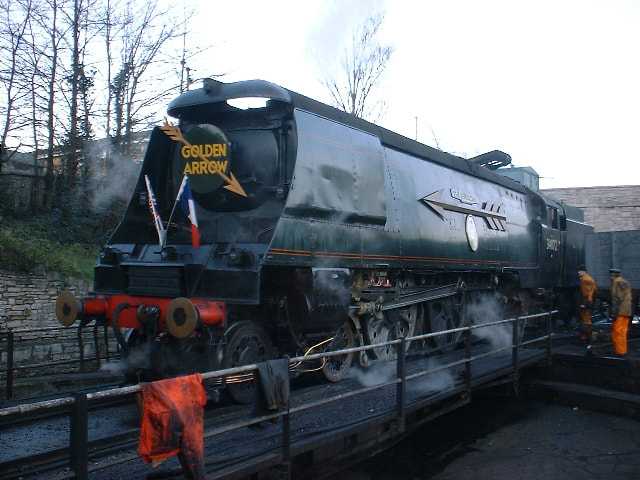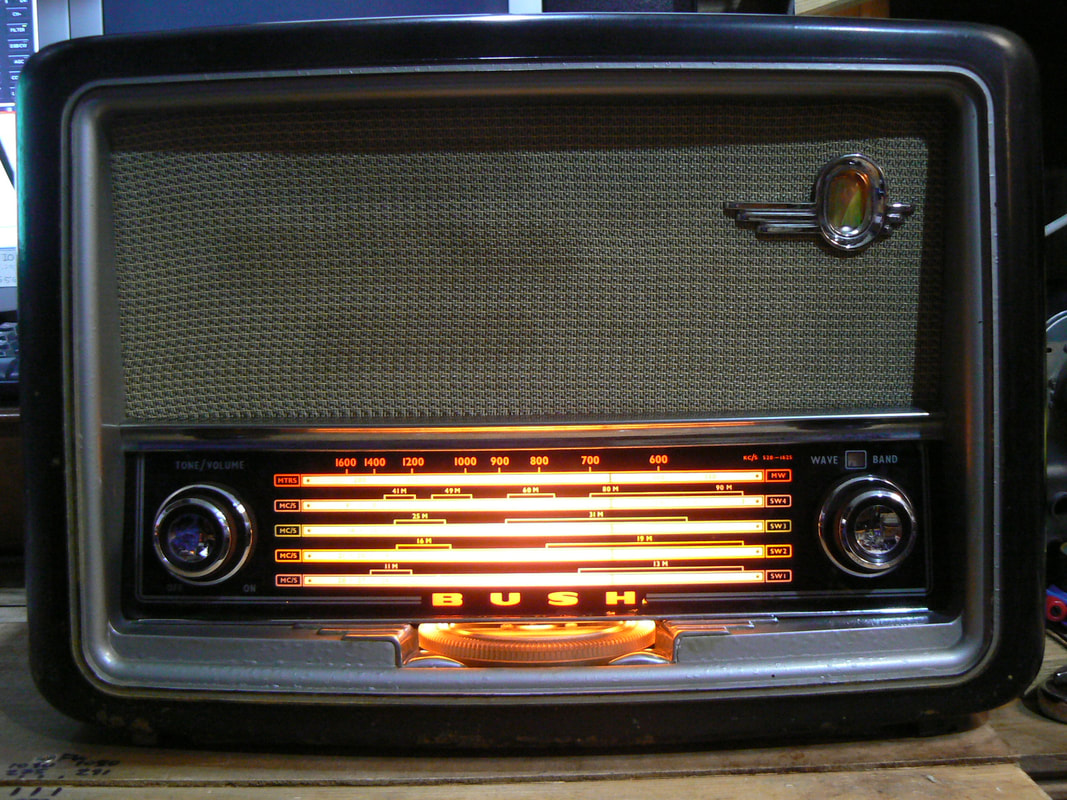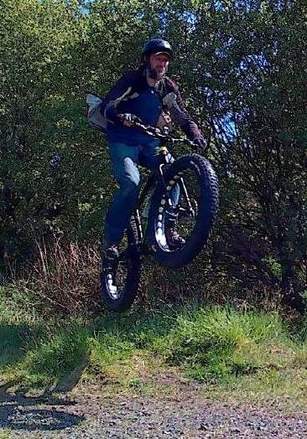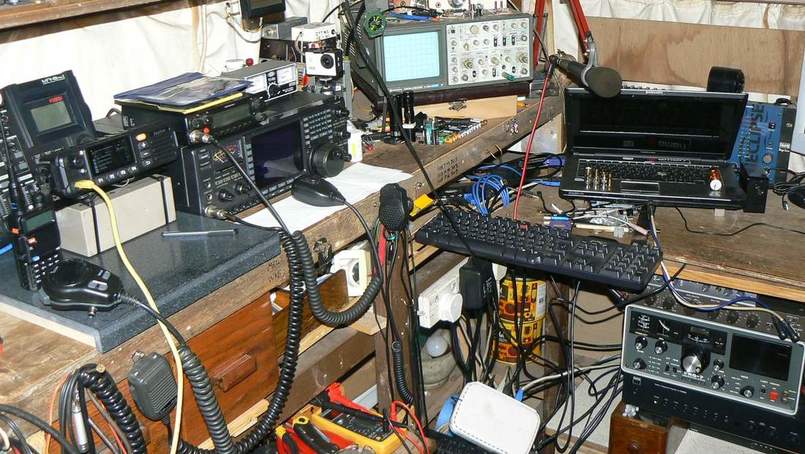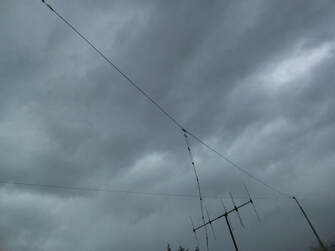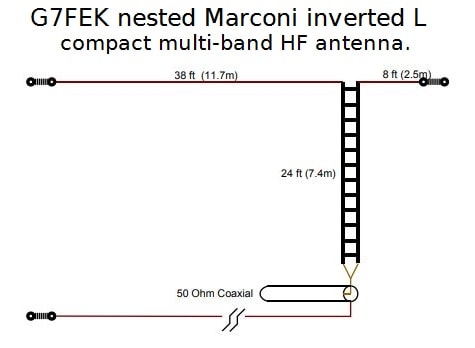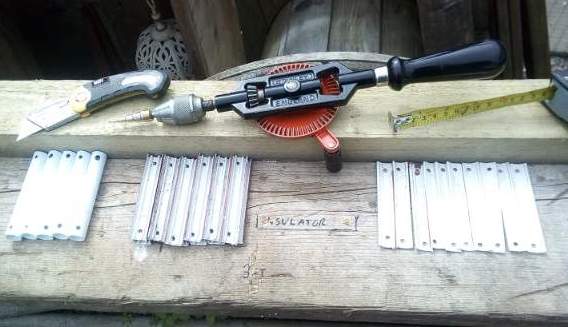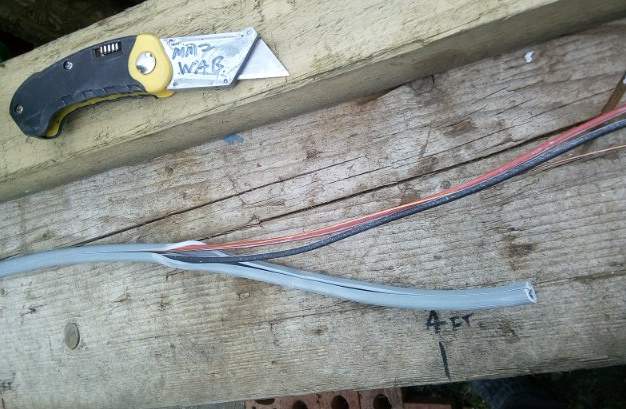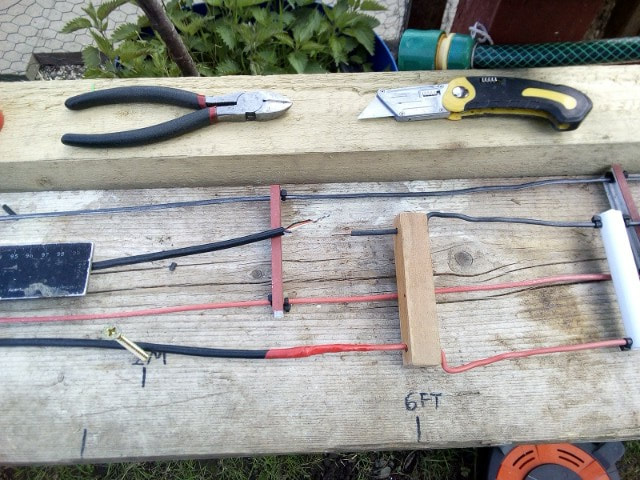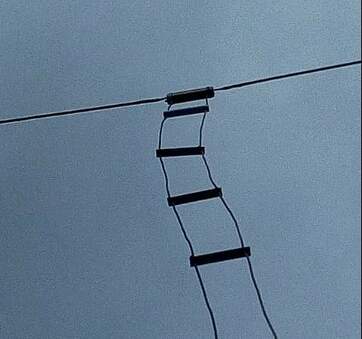A favourite spot looking West towards the Isle of Arran.
Welcome to Hairy Paul's Techno Box.
I am a licensed amateur radio operator with a background in many technical fields.
I enjoy mountain biking and radio communications while roaming about up in the hills of Ayrshire and Dumfries & Galloway regions in South West Scotland.
I am an active member of KLARC The Kilmarnock and Loudoun Amateur Radio Club
I enjoy mountain biking and radio communications while roaming about up in the hills of Ayrshire and Dumfries & Galloway regions in South West Scotland.
I am an active member of KLARC The Kilmarnock and Loudoun Amateur Radio Club
Interesting Places
I enjoy making contacts with other licensed amateur radio stations around the World from interesting locations.
There are a great many historic remains of our industrial and socio-economic heritage scattered around the hills and glens in Scotland and I try to operate from historic sites and share a little information with others who may have an interest in discovering places that have been lost or forgotten in the mists of time.
As an active member of KLARC The Kilmarnock and Loudoun Amateur Radio Club I enjoy taking part in setting up and operating special event stations.
There are a great many historic remains of our industrial and socio-economic heritage scattered around the hills and glens in Scotland and I try to operate from historic sites and share a little information with others who may have an interest in discovering places that have been lost or forgotten in the mists of time.
As an active member of KLARC The Kilmarnock and Loudoun Amateur Radio Club I enjoy taking part in setting up and operating special event stations.
See 'RADIO' page for info on the 2021 centenary special event station at Ardrossan, 11-12 Dec 2021.
The Knockshinnoch Castle Colliery.
Knockshinnoch Castle Colliery Disaster and Miners Memorial Site.
(Location NS6097 1250). KNOCKSHINNOCH CASTLE Colliery
Location: New Cumnock
Types of Coal: House and Steam
Production Commenced: 1944
Year Closed: 1968
Year Abandoned: 1969
Average Workforce: 578
Peak Workforce: 755
Peak Year: 1956
Shaft/Mine Details: 2 shafts, 187m and 128m deep
Details in 1948:
Output 900 tons per day, 264,600 tons per year, stoop and room working. 580 employees. 3 screens for dry coal.
Baum type washer. No baths, but canteen available. Steam, electricity from local public supply. Report dated 09-08-1948.
Pithead baths were built subsequently in 1949, and also served neighboring pits.
(Location NS6097 1250). KNOCKSHINNOCH CASTLE Colliery
Location: New Cumnock
Types of Coal: House and Steam
Production Commenced: 1944
Year Closed: 1968
Year Abandoned: 1969
Average Workforce: 578
Peak Workforce: 755
Peak Year: 1956
Shaft/Mine Details: 2 shafts, 187m and 128m deep
Details in 1948:
Output 900 tons per day, 264,600 tons per year, stoop and room working. 580 employees. 3 screens for dry coal.
Baum type washer. No baths, but canteen available. Steam, electricity from local public supply. Report dated 09-08-1948.
Pithead baths were built subsequently in 1949, and also served neighboring pits.
Photographs of the Knockshinnoch Memorial site taken 13 June 2021.
- click on an image below to view original photo -
- click on an image below to view original photo -
The disaster occurred on 7 September 1950 when workings driven too close to the surface allowed a peat basin at the surface to burst into the mine, the ensuing inrush trapping 129 miners underground, of whom 13 subsequently died. Most of the trapped men were heroically rescued through workings connected to the neighbouring Bank No. 6 Colliery.
The accident occurred about 7.30 p.m., whilst the afternoon shift was at work, on Thursday, 7th September, 1950, when a large volume of liquid peat suddenly broke through from the surface into the No. 5 Heading Section of the Main Coal Seam. The inrush started at the point where the No. 5 Heading, which was rising at a gradient of 1 in 2, had effected a holing at the outcrop of the seam beneath superficial deposits and had made contact with the base of a large natural basin containing glacial material and peat. The liquid matter, rushed down the steeply inclined heading and quickly filled up a large number of existing and abandoned mine tunnel drifts and roadways as well as several working places. This inundation of liquified peat /moss cut off the two means of egress to the surface from the underground workings of the Knockshinnoch Castle colliery.
There were 135 miners working underground at the time. Six men working near the main shaft bottom quickly escaped to the surface by way of the downcast shaft before it become blocked, while 116, with all means of escape cut off, found their way to a part of the mine then unaffected by the inrush, leaving 13 persons missing. The 116 men trapped below ground were rescued after an incredible rescue effort by miners and rescue teams from as far afield as Edinburgh and Liverpool lasting more than two days.
The 13 men who sadly lost their lives in the disaster were;
1. John Dalziel, 50 Loader Attendant
2. James D. Houston, 46 Coal miner
3. Thomas Houston, 40 Coal miner
4. William Howat, 61 Switch Attendant
5. William Lee, 48 Coal miner
6. James Love, 48 Coal Miner
7. William McFarlane, 36 Coal Miner
8. John McLatchie, 48 Shotfirer
9. John Murray or Taylor, 33 Coal Miner
10. Samuel Rowan, 25 Coal Miner
11. John Smith, 55 Coal Miner
12. Daniel Strachan, 38 Fireman
13. John White, 26 Coal Miner
Further information:
Scottish Mining site page: (enquiry, reports and extensive information) http://www.scottishmining.co.uk/370.html
Video footage of a news report on the disaster from British Pathe news: https://youtu.be/SnYOKy6_7Uc
Pathe News clips: https://youtu.be/6DHjZcTXO1A
Canmore site information link: http://canmore.org.uk/site/80656
The disaster was dramatized in 1952 with the release of the British film, 'The Brave Don't Cry', starring John Gregson, Alex Keir and Fulton Mackay.
The accident occurred about 7.30 p.m., whilst the afternoon shift was at work, on Thursday, 7th September, 1950, when a large volume of liquid peat suddenly broke through from the surface into the No. 5 Heading Section of the Main Coal Seam. The inrush started at the point where the No. 5 Heading, which was rising at a gradient of 1 in 2, had effected a holing at the outcrop of the seam beneath superficial deposits and had made contact with the base of a large natural basin containing glacial material and peat. The liquid matter, rushed down the steeply inclined heading and quickly filled up a large number of existing and abandoned mine tunnel drifts and roadways as well as several working places. This inundation of liquified peat /moss cut off the two means of egress to the surface from the underground workings of the Knockshinnoch Castle colliery.
There were 135 miners working underground at the time. Six men working near the main shaft bottom quickly escaped to the surface by way of the downcast shaft before it become blocked, while 116, with all means of escape cut off, found their way to a part of the mine then unaffected by the inrush, leaving 13 persons missing. The 116 men trapped below ground were rescued after an incredible rescue effort by miners and rescue teams from as far afield as Edinburgh and Liverpool lasting more than two days.
The 13 men who sadly lost their lives in the disaster were;
1. John Dalziel, 50 Loader Attendant
2. James D. Houston, 46 Coal miner
3. Thomas Houston, 40 Coal miner
4. William Howat, 61 Switch Attendant
5. William Lee, 48 Coal miner
6. James Love, 48 Coal Miner
7. William McFarlane, 36 Coal Miner
8. John McLatchie, 48 Shotfirer
9. John Murray or Taylor, 33 Coal Miner
10. Samuel Rowan, 25 Coal Miner
11. John Smith, 55 Coal Miner
12. Daniel Strachan, 38 Fireman
13. John White, 26 Coal Miner
Further information:
Scottish Mining site page: (enquiry, reports and extensive information) http://www.scottishmining.co.uk/370.html
Video footage of a news report on the disaster from British Pathe news: https://youtu.be/SnYOKy6_7Uc
Pathe News clips: https://youtu.be/6DHjZcTXO1A
Canmore site information link: http://canmore.org.uk/site/80656
The disaster was dramatized in 1952 with the release of the British film, 'The Brave Don't Cry', starring John Gregson, Alex Keir and Fulton Mackay.
Enjoying the landscape on two wheels.I have a passion for technical things and delight in finding out how everything works. I also enjoy mountain biking and riding 'Fat Bikes' I do try my best to keep both wheels on the ground but sometimes I just can't stop myself grabbing some air off anything that looks like it could be used as a 'kicker'. As soon as I get on a Fat-Bike it makes me feel like a big kid on a BMX again.
I do have to be a little more reserved these days as I don't bounce as readily as I used to but sometimes the temptation to 'Huck It' or 'Send It' takes over from Self Preservation. . . |
A busy shack is never properly tidy, it just evolves as time passes.
Antennas for HF amateur radio operation.
The most important part of any radio station is the antenna.
A basic radio with an efficient antenna can perform better than the best radio with all the fancy bells and whistles using an inefficient antenna system. Whatever radio equipment You use it will only work properly and perform well with a good antenna system.
There are huge numbers of antenna designs to choose from to suit almost any location.
Many people will simply buy a commercially produced antenna and be happy with that but there are also many people who enjoy building their own antennas and experimenting with different designs to find what works best at their specific location.
There is no such thing as a 'best antenna' that is perfect for everyone.
It takes a bit of time and experimentation to discover what works best at each specific location.
A basic radio with an efficient antenna can perform better than the best radio with all the fancy bells and whistles using an inefficient antenna system. Whatever radio equipment You use it will only work properly and perform well with a good antenna system.
There are huge numbers of antenna designs to choose from to suit almost any location.
Many people will simply buy a commercially produced antenna and be happy with that but there are also many people who enjoy building their own antennas and experimenting with different designs to find what works best at their specific location.
There is no such thing as a 'best antenna' that is perfect for everyone.
It takes a bit of time and experimentation to discover what works best at each specific location.
I personally enjoy constructing my own antennas for LF/HF/VHF/UHF and microwave frequencies using whatever suitable materials are available. I have a lot of fun building and comparing different antenna designs at my home location and for portable operation.
I have used a wide selection of different antenna designs inlcluding:-
136ft NVIS horizontal dipole 18ft above ground for short range communications on 80m & 40m (also works on 30m with impedance matching)
262ft horizontal delta loop. 160m, 80m, 40m, 30m, 20m, 17m, 15m, 6m.
G7FEK multi-band compact HF nested Marconi L. 80m, 40m, 30m, 20m, 17m, 15m, 12m, 10m and 6m with impedance matching.
42ft vertical (40m - 10m)
5 element Yagi-Uda array (2m)
Moxon rectangle. on several bands in various configurations, eg; crossed moxon turnstile for sat working on 70cm + single moxon for 2m
Vertical GP monopole and colinear arrays for 1090MHz ADSB aircraft transponder tracking.
Various longwires for wideband monitoring with FRG-7 and SDR receivers.
Horizontal Quad loop in attic for the old analogue valve sets in the house.
I also have a growing collection of home brewed antennas that I use on Network Radio devices to extend operating range from the cell-tower networks (700-2600MHz) ISM bands for WiFi networking (2.4GHz and 5GHz band A) with a few mobile whips, colinear and monopole antennas for VHF & UHF portable operation.
I have used a wide selection of different antenna designs inlcluding:-
136ft NVIS horizontal dipole 18ft above ground for short range communications on 80m & 40m (also works on 30m with impedance matching)
262ft horizontal delta loop. 160m, 80m, 40m, 30m, 20m, 17m, 15m, 6m.
G7FEK multi-band compact HF nested Marconi L. 80m, 40m, 30m, 20m, 17m, 15m, 12m, 10m and 6m with impedance matching.
42ft vertical (40m - 10m)
5 element Yagi-Uda array (2m)
Moxon rectangle. on several bands in various configurations, eg; crossed moxon turnstile for sat working on 70cm + single moxon for 2m
Vertical GP monopole and colinear arrays for 1090MHz ADSB aircraft transponder tracking.
Various longwires for wideband monitoring with FRG-7 and SDR receivers.
Horizontal Quad loop in attic for the old analogue valve sets in the house.
I also have a growing collection of home brewed antennas that I use on Network Radio devices to extend operating range from the cell-tower networks (700-2600MHz) ISM bands for WiFi networking (2.4GHz and 5GHz band A) with a few mobile whips, colinear and monopole antennas for VHF & UHF portable operation.
Can't work HF due to limited space for antennas? This might be what You need!
G7FEK compact multi-band antenna for HF.
|
This is the G7FEK nested Marconi inverted L type antenna.
It is compact antenna that works well on multiple HF bands. With an overall horizontal span of just over 46ft this antenna can be fitted into small gardens that don't have space for a dipole or half size G5RV. The G7FEK provides a reasonably low take-off angle making it good for medium and long range HF communications. It exhibits an almost omni-directional pattern and its signals are primarily vertically polarised. It is simple and cheap to build and will work well on 80m, 40m ,20m and 15m without ATU. Good match to 50 ohm coax, no Balun required. It can be used on all bands from 80m to 10m with a tuner. |
Most operators will build this type of antenna using commercially available open wire balanced feeder for the vertical element section.
As I did not have any suitable ladder line available I decided to make my own using what I had available.
As I did not have any suitable ladder line available I decided to make my own using what I had available.
'Home Brewed' ladder line.
#1: The insulating spacers for the open wire balanced line were made by cutting some electrical conduit into 3 1/2 inch lengths and drilling holes to slide the wires through giving a nominal 3 inch spacing between the wires.
#2: The wire was 're-purposed' 2.5mm twin and earth AC power cable that is no longer suitable for its intended use due to the red & black insulation not conforming to modern electrical installation regulations. (It could be used for DC power ) As the colour of the insulation makes zero difference to its electrical and RF handling properties I stripped off the outer jacket of the cable and used the red & black covered 2.5mm CSA copper wires to make the 24ft ladder line vertical section of the antenna.
#3: The insulating spacers are held in place on the wires using small cable ties and connections to the antenna wires are soldered providing good electrical connection and mechanical strength.
#2: The wire was 're-purposed' 2.5mm twin and earth AC power cable that is no longer suitable for its intended use due to the red & black insulation not conforming to modern electrical installation regulations. (It could be used for DC power ) As the colour of the insulation makes zero difference to its electrical and RF handling properties I stripped off the outer jacket of the cable and used the red & black covered 2.5mm CSA copper wires to make the 24ft ladder line vertical section of the antenna.
#3: The insulating spacers are held in place on the wires using small cable ties and connections to the antenna wires are soldered providing good electrical connection and mechanical strength.
|
For building the G7FEK antenna the topmost spacer was made from a piece of hardwood with two holes drilled in it to take the wires. I use a wooden block instead of the plastic conduit for the top spacer as this provides greater strength and easily handles the tension required to keep the antenna in the air. It will also handle the increased forces caused by wind loading in stormy weather far better than plastic conduit and does not become brittle in sub zero temperatures.
The connections are soldered to ensure good conductivity and mechanical strength between the 2.5mm copper wire and the antenna wire (telephone line wire with 4 conductors and 3 stainless steel catenary wires soldered together at both ends) |
This is just one of several websites I run, I also occasionally post radio related stuff on my [ Blog Page ]
This website uses marketing and tracking technologies. Opting out of this will opt you out of all cookies, except for those needed to run the website. Note that some products may not work as well without tracking cookies.
Opt Out of Cookies